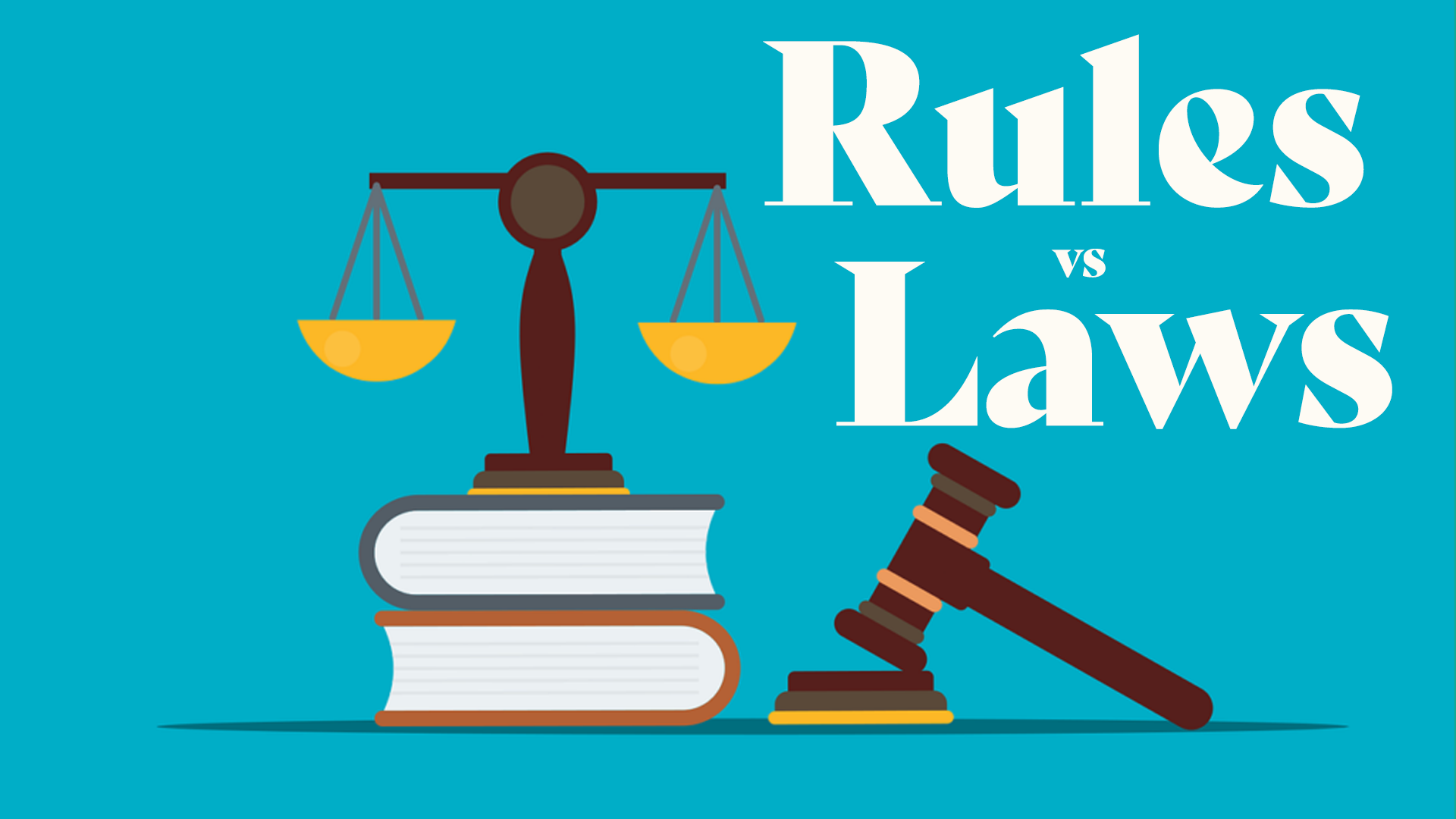Rules vs. Laws: What’s the Difference?

Rules and laws are both instructions for how people should behave, but they work on different levels.
The Dive
Every society needs guidelines to help people live together safely and fairly. These guidelines take two main forms: rules and laws. At first glance, they may seem similar, since both tell people what they should or should not do. However, the scope and consequences of rules and laws make them very different. Rules guide behavior in small groups like families, classrooms, or sports teams, while laws apply broadly to entire towns, states, or countries.
Rules are usually created by authority figures in specific settings (parents, teachers, or coaches) and are often meant to teach safety, respect, and responsibility. A family might make a rule that children cannot run indoors to prevent injuries, while a teacher may require students to raise their hands before speaking in class to ensure fairness. The consequences of breaking these rules are usually limited to the group, such as losing privileges or facing discipline at school.
Laws, by contrast, are formal rules passed by governments and enforced by police and courts. They apply to everyone equally, regardless of group membership, and carry more serious consequences if broken. For example, traffic laws establish speed limits to keep roads safe, food safety laws regulate restaurants and grocery stores to prevent illness, and licensing laws ensure doctors and nurses are properly trained to care for patients. Breaking a law can result in fines, court cases, or even jail time.
In the United States, the Constitution is the highest source of law. It guarantees freedoms such as speech, religion, and the press while also protecting people from discrimination based on race, gender, or disability. From this foundation, legislatures create statutory laws, and courts interpret those laws through decisions known as common law. Together, these systems form the legal framework that governs the entire country.
It is important to recognize that not all laws are just. Throughout history, some laws have discriminated against groups of people or violated basic principles of fairness. Dr. Martin Luther King Jr. argued that an unjust law is one that a majority imposes on others but not on itself, or one that degrades human dignity. Segregation laws are a clear example. In such cases, citizens have challenged unjust laws through protest, activism, and civil disobedience to bring society closer to justice.
Understanding the difference between rules and laws shows how societies operate on multiple levels. Rules help small groups function smoothly and prepare individuals for greater responsibilities, while laws ensure the safety and fairness of entire communities. Both are essential, but learning to evaluate rules and laws also teaches us when systems need to be improved. By following fair rules and just laws, and by questioning those that are harmful, we participate in shaping a better, more just society.
Why It Matters
Understanding the difference between rules and laws helps us see how societies function and who holds the power to shape behavior. Rules are created by parents, teachers, and community leaders to guide smaller groups, while laws are written and enforced by governments to protect the safety and rights of all citizens. But not every rule or law is automatically fair. History shows that unjust laws, like those that allowed segregation or discrimination, can harm communities rather than help them. Learning about rules and laws gives us the tools to ask important questions: Who makes these rules? Who benefits from them? Do they serve the greater good? By understanding how rules and laws are made and by insisting that they are just, we can become active citizens who help build fairer, stronger, and more supportive communities.
?
How are rules in school similar to laws in society? How are they different?
Why do laws carry more serious consequences than rules?
What are examples of just and unjust laws from history?
How does the U.S. Constitution shape the laws we live under today?
Why is it important for citizens to sometimes challenge laws that are unfair?
Dig Deeper
A kid-friendly introduction to the difference between rules and laws, with examples of why both matter.
An easy-to-understand video explaining rules at home and school versus laws in the community.
Learn about the complex process of how an idea becomes a law in the U.S. government.
Related

Federalists vs. Anti-Federalists: The Battle That Built the Constitution
One side feared chaos. The other feared tyranny. Together, they gave us the Constitution—and the Bill of Rights.

Separation of Powers
The U.S. Constitution divides power among three branches—legislative, executive, and judicial—to prevent tyranny and keep government balanced.

The First Amendment: America’s Blueprint for Freedom
The First Amendment protects freedoms of speech, religion, press, assembly, and petition. It’s the foundation of American democracy—but also a source of constant debate and interpretation.
Further Reading
Stay curious!
